READY TO GET STARTED?
REQUEST A FREE ESTIMATE
Fill out the form below or call (888) 466-7849 for a free, no-obligation estimate.
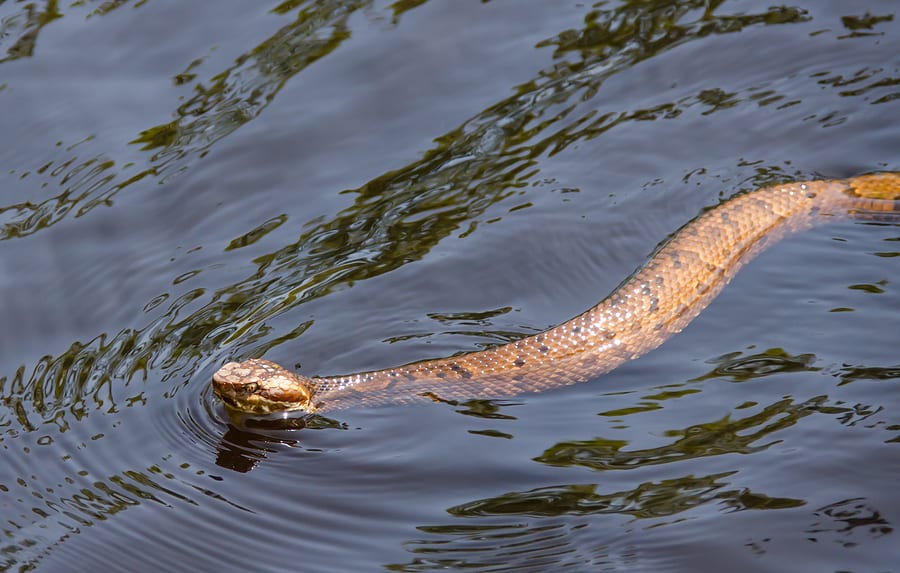
Water moccasins, also known as cottonmouths, are one of 6 venomous snake species found in Georgia. These snakes are often mistaken for non-venomous water snakes (which are illegal to kill in the state of Georgia). Water moccasins are found in most areas of Georgia with the exception of the northern central region. While they often sunbathe on land, logs, or stumps found near water sources, they will also inhabit swamps, backwaters, and slow-moving streams.
Water moccasins are large, heavy bodied snakes with dull colors and rough scales. They have a single row of these scales under their tails (while water snakes have a double row). They also have elliptical eye pupils and heat sensing pits between their eyes and nostrils. Most have banding on their bodies with wider bands on the sides that narrow and taper near the top. These bands look like hourglasses when looking at them from above. They also have a dark stripe that runs from the back of their eye to the corner of their jaw which distinguishes them from water snakes and other species.
When agitated, water moccasins will vibrate their tails (similar to a rattlesnake rattle) and gape their mouths open, exposing the white coloration inside (hence the name cottonmouth). While these snakes have gotten a reputation for being aggressive, they are actually more likely to flee when encountered.
Water moccasins prefer to lay on logs and tree limbs near the water’s edge but will move into the water, as well. They can open their mouths and bite underwater, often hunting for frogs while swimming. The way they swim is also a distinguishing factor for these snakes. Water moccasins swim with their bodies riding on the surface of the water and their heads elevated above the water. They don’t typically submerge underwater, although they can. Water snakes will dive underwater when fleeing from a disturbance.
If you encounter a water moccasin in the wild, don’t panic. Stop moving towards them and back away slowly. Steer clear of them as you make your way away from them. Don’t ever attempt to kill or move a venomous snake on your own. If one makes its way into your home, call a professional wildlife control company for proper snake removal and relocation.
To keep water moccasins from lurking around your home, minimize stacks of wood near your house, get rid of standing water, bush piles, and any other moisture prone cover they can use. They also love to eat frogs so keep populations of these reduced around your property. They love wet hiding places with decaying plants or wood. Keep your home and yard clear and dry.
If you have a problem with snakes, contact your local pest control company for assistance.
How to Enjoy a Bed Bug Free Vacation
How to Handle a Termite Infestation
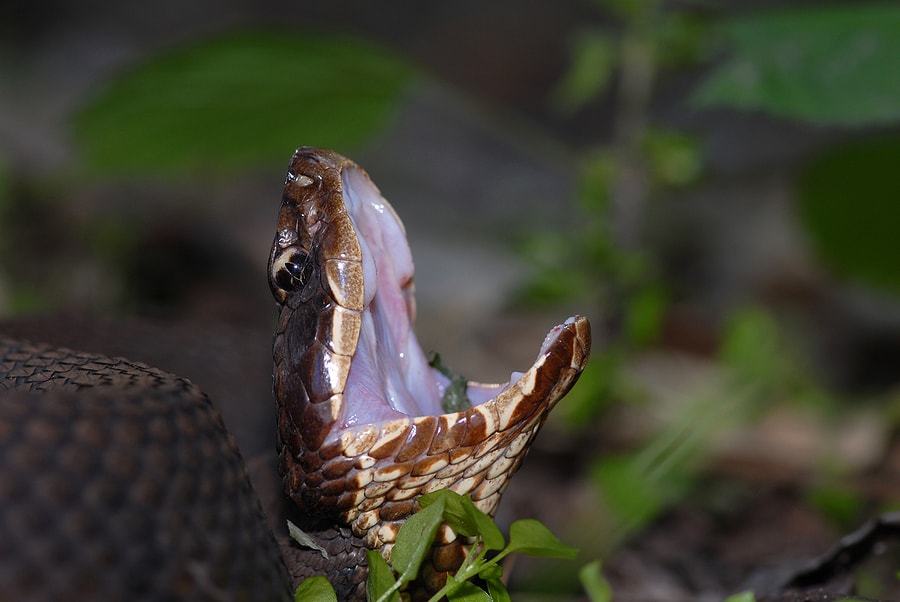
As the weather warms up, snakes will emerge to take advantage of the warm weather and kick start their mating season. One of the snakes you’ll start to see this spring is the water moccasin. This venomous snake, also known as the cottonmouth, is a semi-aquatic snake found throughout the southeastern United States. The water moccasin is often mistaken for other snakes, so recognizing this snake in the wild is critical.
Water moccasins have large, triangular shaped heads with large jowls (due to their venom glands). Their eyes have a dark line through them and elliptical-shaped pupils. These snakes are large in size, ranging from 24″ to 48″. They have thick, heavy bodies when compared to their length. Their coloration can vary. These snakes can be completely brown or black (usually adults) or brown or yellow with dark crossbands. Adults tend to be darker while juveniles tend to be more brightly colored. They also have dark brown or yellow blotches on their bellies and black on the underside of their tails.
Water moccasins have facial pits they use to sense heat from predators and prey. They got their cottonmouth alias because the inside of their mouths are white in color. They will gape when they feel threatened, exposing this white color in an attempt to scare the threat away.
These snakes are found throughout the southeast, as far north as Virginia. They can be found in almost any freshwater habitat. They are active both during the day and at night, but will commonly hunt at night, especially during the hotter seasons of the year. They eat a variety of prey, including lizards, amphibians, other snakes, small turtles, birds, fish, mammals, and even baby alligators. They mate in the early summer.
Water moccasins are often mistaken for other nonvenomous water snakes. While the water moccasin has a thick body and short, thick tail, nonvenomous water snakes have more slender bodies and thinner tails. The shape of the head is also important. Water moccasins have large, blocky heads with pronounced necks that are much more narrow than the head. Water snakes, on the other hand, have more slender heads with necks that are more comparable in width to their heads.
While it can be tempting to run away or grab the closest thing you can to kill a snake when you come across it, the best practice is to leave it alone and slowly back away. In the case of a venomous snake, contact your local pest control company who can implement safe snake removal and relocation techniques.
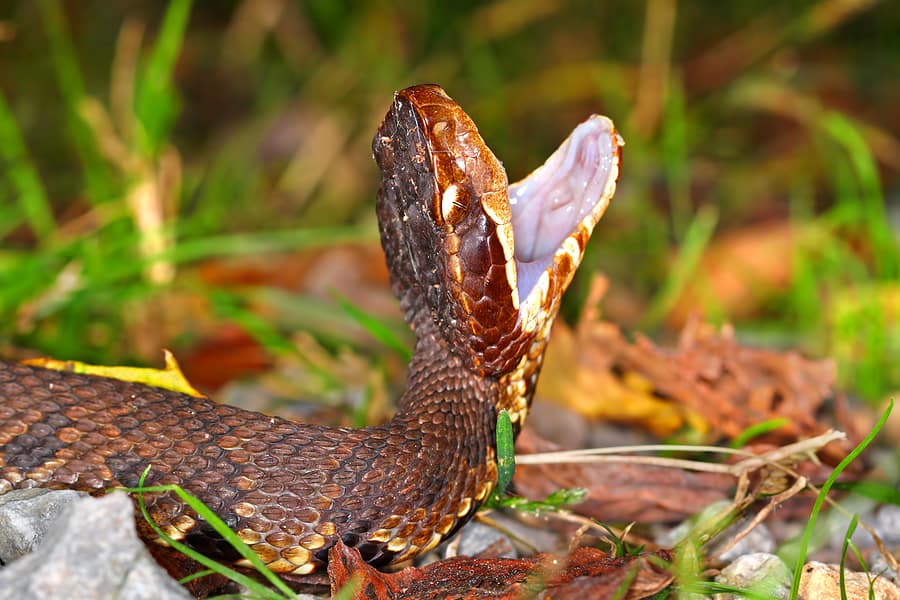
Despite popular belief, not all snakes are harmful to humans. In fact, most snakes will go out of their way to avoid humans when they encounter them. Only a handful of venomous snakes reside in Georgia. One of the most common of these is the water moccasin.
Water moccasins, also known as cottonmouths, is a venomous snake found throughout the southeastern United States. They are known as the cottonmouth because of the white coloring on the inside of their mouths that show when they are threatened. These snakes are usually a banded brown or yellow color. They range in size anywhere from 2 to 4 feet and can swim in the water and slither on land.
The bite of a water moccasin is very dangerous to humans. If you are bitten by a water moccasin, seek medical attention immediately. Symptoms following a water moccasin bite include pain, swelling, discoloration, weakness, fatigue, difficulty breathing, nausea, and decreased blood pressure.
Adult water moccasins have control over their venom. Because they have a limited supply, they have learned to conserve it, sometimes biting with a “dry bite” where no venom is released. Although painful, these bites aren’t as dangerous as a venom-filled bite. This is also what makes baby and juvenile water moccasins so dangerous. These young snakes haven’t learned control over their venom yet, therefore injecting their full supply when they bite.
If you encounter a water moccasin or any other snake you can’t positively identify in the wild, steer clear of it and don’t enter it’s personal space. Don’t attempt to move it or kill it. If you come across one of these snakes in your home, contact a professional for safe removal and relocation.
Although most snakes are actually beneficial to have around your home, you can prevent snakes with the following tips:
If you encounter a snake, contact a local pest control company who can implement safe and humane snake removal protocols.
Roof Rats: How To Identify and Eliminate
Common Rodents to Lookout for this Winter
Getting Ready for Spring Lawn Care
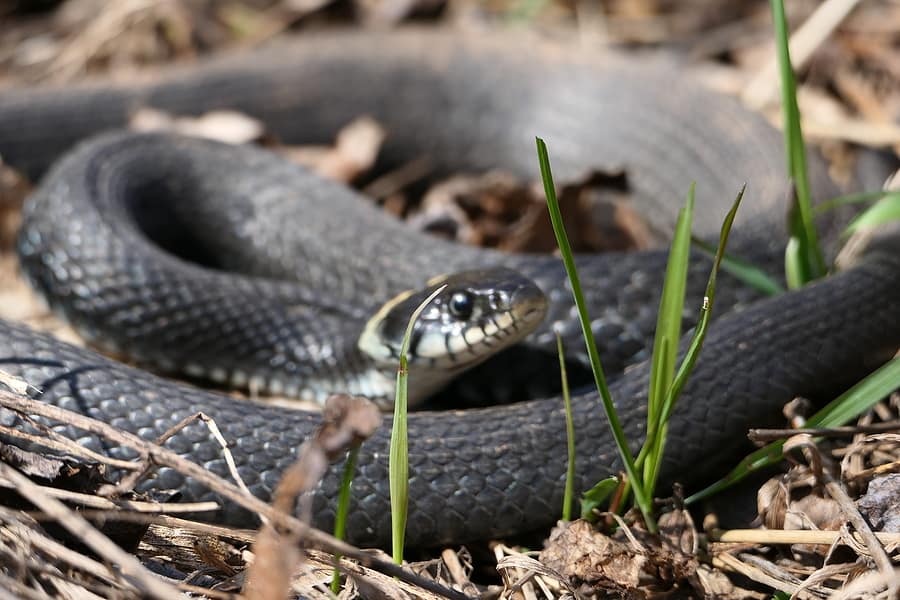
As the season shifts from summer to early fall, cooler weather is around the corner. Many pests begin the hustle and bustle of preparing for winter – scavenging and storing food, finding a place to hibernate, or making their way into your home to overwinter. This time of year sees an increase in one pest in particular – snakes! Fall is a time for high snake activity and encounters with humans become more common.
There are many reasons snake control is important in the fall. As the leaves begin to change colors to red, orange, and brown and fall to the ground, they provide the ideal camouflage for snakes. Fall is also the time snakes begin to prepare for brumation and/or hibernation. Most snake species breed in the spring and eggs are hatched by the time autumn rolls around. These juvenile snakes are curious and more likely to be seen by humans. There are 6 venomous snake species in the southeastern United States and each of them actually breed in the fall. This means this time of year males will be actively seeking females to breed with, increasing your chance of an encounter with them. Overdevelopment in many areas has also depleted the natural habitats of many snakes, also increasing their chances of encounters with humans.
Because we see such an increase in snake activity during the fall, snake control becomes much more important. Here are some of our favorite snake prevention tips you can utilize this snake season.
Are Mosquitoes Still Active in the Fall?
What Attracts Centipedes To Your Home?
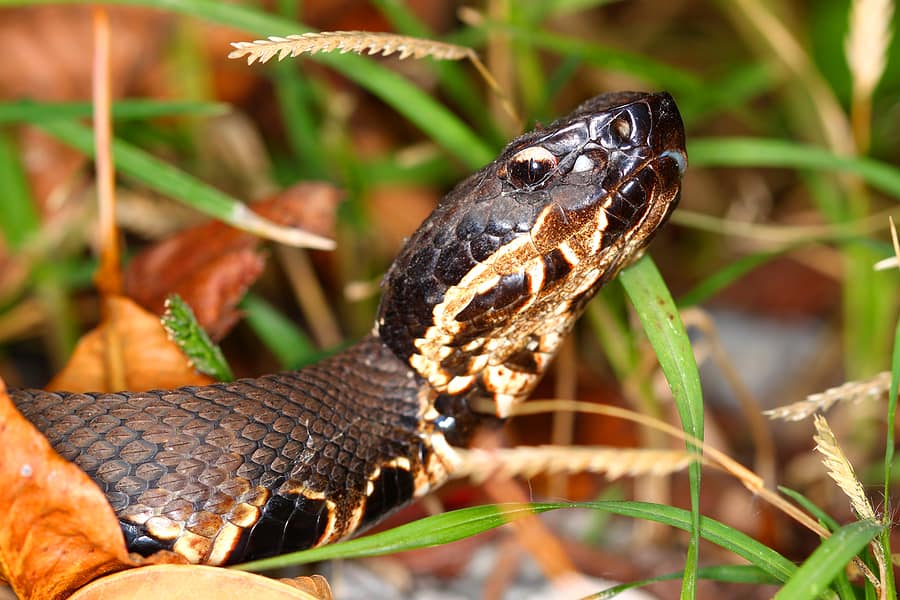
As the weather cools off and fall peeks around the corner, many people are taking advantage of the milder weather and spending more time outside. Unfortunately, many pests and wildlife, including snakes, are also enjoying the milder weather, preparing for the impending winter. Although most snakes encountered in Georgia are nonvenomous, there are a few species of venomous snakes to keep an eye out for. These include the copperhead, the timber rattlesnake, the cottonmouth, the eastern diamondback rattlesnake, the eastern coral snake, and the pigmy rattlesnake.
When spending time outdoors, keep an eye out for snakes in backyards, parks, and areas near the woods. They also like to frequent areas that border streams, lakes, swamps, and ponds. Snake season begins in the spring, usually March to April. Snake season doesn’t end until late fall or even winter, depending on weather patterns and where you’re located. Snakes in the southern states will stay active much longer than up north where the cold sets in sooner.
If you run into a snake, keep these tips in mind:
Because snake season hasn’t quite ended yet, it’s still important to take precautions when spending time outdoors. It’s best to leave snake removal to the professionals, especially if you aren’t sure what type of snake you’re dealing with. If you have a problem with snakes or any other pests, contact your local pest control company for proper identification and safe elimination of the offending creature.
Two Reasons You’re Attracting Termites
5 Common Ways to Attract Cockroaches
Preventing a Mosquito Infestation